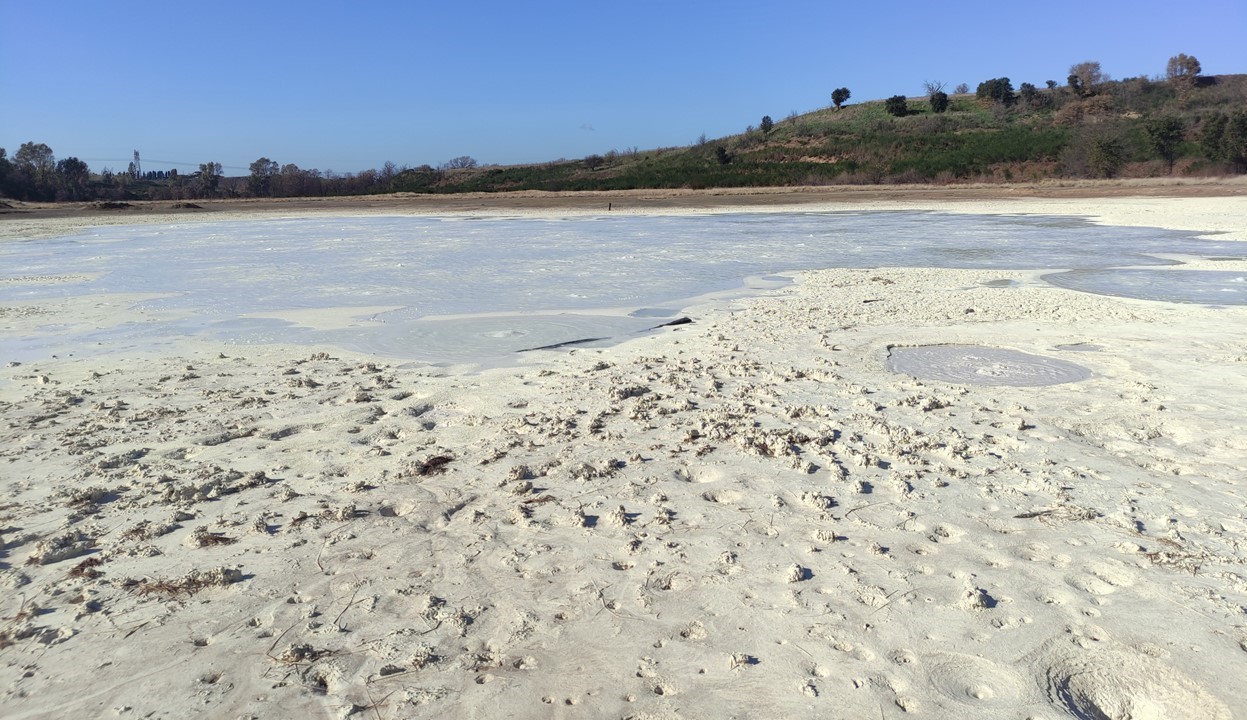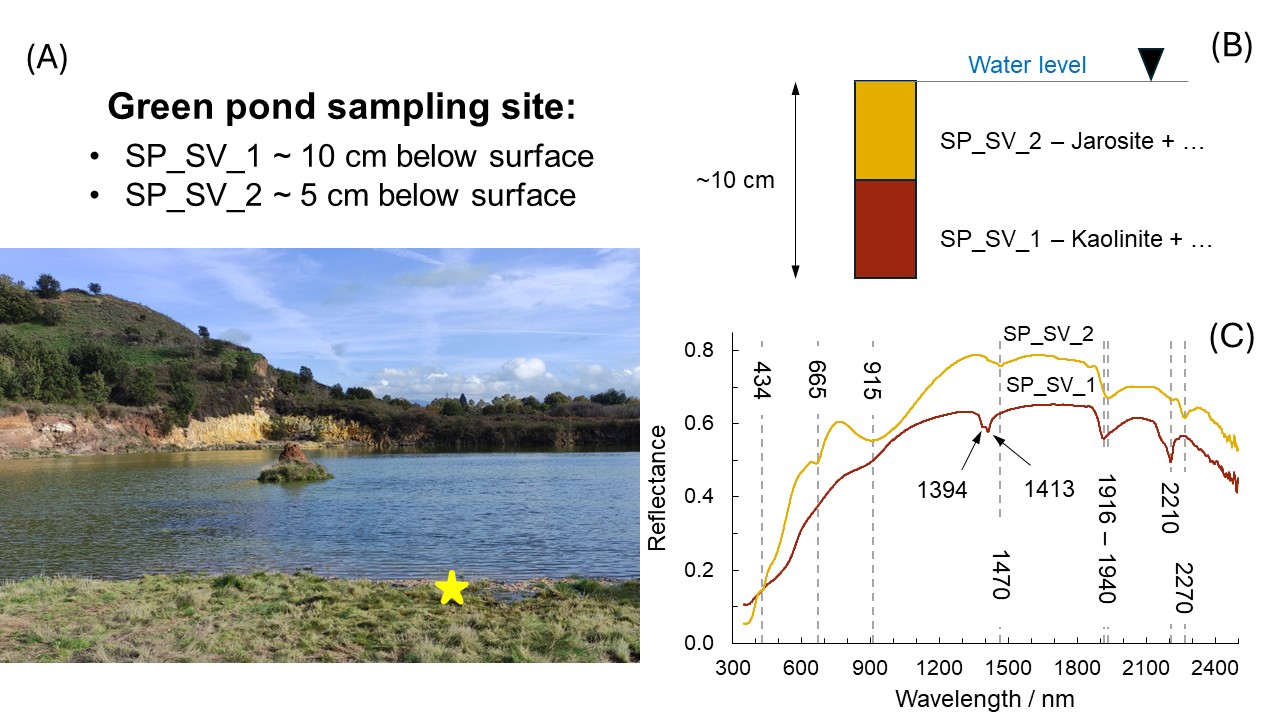Mineralogical and microbiological characterization of the Solforata of Pomezia, Alban Hills, Italy. A case study from a possible Mars analog site.
- 1National Institute for Astrophysics, Institute for Space Astrophysics and Planetology, Rome, Italy (enrico.bruschini@inaf.it)
- 2Department of Biology and Biotechnology “Charles Darwin”, Sapienza University of Rome, Rome, Italy
- 3Water Research Institute, National Research Council of Italy - IRSA-CNR, Montelibretti, Rome, Italy
- 4Institute of Molecular Biology and Pathology, National Research Council - IBPM-CNR, Rome, Italy
It is widely accepted that Mars, in its early history, underwent different stages of aqueous alteration with waters characterized by variable pH and chemistry (e.g., Bibring et al. 2006, Hurowitz and McLennan 2007). While it is commonly assumed that neutral-to-alkaline aqueous weathering produces clays while more acidic waters lead to the formation of sulfates (e.g., Bibring et al. 2006) it is not always easy to fit the recent observations of the rovers deployed on Mars with this simple two-stage model. In this regard, the mineralogical, chemical, and microbiological investigation of Earth analog sites is of paramount importance to advance our understanding of planetary surfaces evolution. Here we discuss the combined mineralogical and microbiological investigation of a terrestrial site located in central Italy (SW margin of the Alban Hills volcanic complex) and characterized by extensive CO2 and H2S cold discharges. H2S oxidation resulted in sulfur mineralization between 26 and 47 Ky (Voltaggio et al. 2001). The area was interested by sulfur extraction between 40 and 50 years ago which deeply modified the morphology and water circulation of the site with the formation of shallow ponds. The presence of sulfur and its oxidation products combined with the presence of water bodies results in extremely low pH (1-3) of the ponds (Fig. 1).

Figure 1. The Stagno Bianco (White pond) is characterized by active sedimentation of sulfur and an extremely low pH (1.18).
We collected samples along the shores of the ponds as well as from weathered rocks outcropping in the area. The collected samples were analyzed by a combination of VNIR reflectance and Raman spectroscopy to characterize the mineralogical components. The organic materials were detected and visualized using fluorescence microscopy, to quantify and describe the microbial community we instead extracted and sequenced the DNA. Our results highlight the diffuse presence of sulfates (jarosite) and dioctahedral clay (kaolinite) in correspondence with the ponds characterized by pH between 2.8 and 3 (Fig. 2), whereas in the most acidic pond (White pond) we detect the presence of sulfur likely mixed with minor amounts of amorphous materials. Kaolinite is also present throughout the site as the result of weathering of the volcanic rocks. We identified soils particularly enriched in oxides/hydroxides in the uppermost layers of the site.

Figure 2. Green pond sampling site. Panel (A): the yellow star marks the sample collection site. Panel (B) shows the stratigraphy of the collected materials. Panel (C) shows the spectra of the samples and the main absorptions (dashed lines and numbers corresponding to band position): the deeper sample (SP_SV_1 - 10 cm) is characterized by a dominance of kaolinite with likely presence of oxides while the upper layer (SP_SV_2 – 5 cm) is dominated by jarosite.
DNA analysis will characterize the microbial community present in such an extreme environment and will help to constrain the role of bacteria in the synthesis of secondary minerals (i.e., jarosite and kaolinite). Our work will have a direct impact on Martian exploration by refining our knowledge of acidic aqueous alteration of volcanic materials. In addition, it will contribute to the understanding of the interactions between microbes and minerals in acidic conditions which is of high relevance from an astrobiological point of view.
Fundings: the authors acknowledge the support from the Italian Space Agency (ASI) project N◦ 2023-3-HH.0 ″Attività scientifica di preparazione all’esplorazione marziana”. This work was also supported by MINI GRANTS 2023 RSN-3 INAF-Bando di Astrofisica Fondamentale 2023.
References:
- Bibring, J. P., Langevin, Y., Mustard, J. F., Poulet, F., Arvidson, R., Gendrin, A., ... & Neukum, G. (2006). Global mineralogical and aqueous Mars history derived from OMEGA/Mars Express data. science, 312(5772), 400-404. https://doi.org/10.1126/science.1122659
- Hurowitz, J. A., & McLennan, S. M. (2007). A∼ 3.5 Ga record of water-limited, acidic weathering conditions on Mars. Earth and Planetary Science Letters, 260(3-4), 432-443. https://doi.org/10.1016/j.epsl.2007.05.043
- Voltaggio, M., Di Lisa, G. A., & Voltaggio, S. (2001). U-series disequilibrium study on a gaseous discharge area (Solforata of Pomezia, Alban Hills, Italy): implications for volcanic and geochemical risk. Applied geochemistry, 16(1), 57-72. https://doi.org/10.1016/S0883-2927(00)00019-6
How to cite: Bruschini, E., Ferrari, M., Mazzoni, C., Fazi, S., Piacentini, A., Costanzo, G., De Angelis, S., Brossier, J., De Sanctis, M. C., and Altieri, F.: Mineralogical and microbiological characterization of the Solforata of Pomezia, Alban Hills, Italy. A case study from a possible Mars analog site., Europlanet Science Congress 2024, Berlin, Germany, 8–13 Sep 2024, EPSC2024-175, https://doi.org/10.5194/epsc2024-175, 2024.